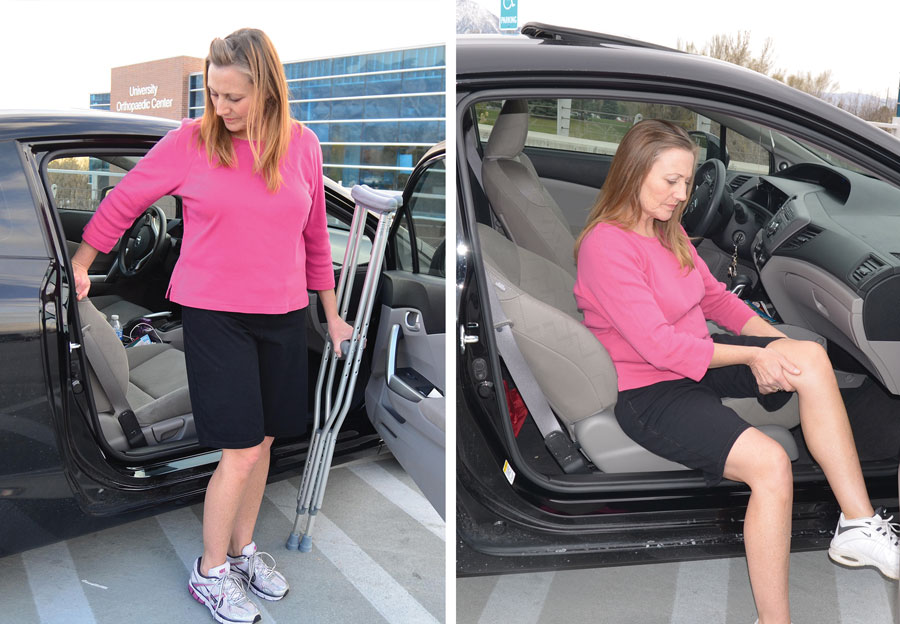Showering & Dressing
Showers
- To make sure the surgical sites stay dry, cover the dressing with "Glad Press and Seal." Note: Your post-surgical dressing is water proof.
- Transfer into the shower leading with the non-surgical leg and transfer out of the shower leading with the surgical leg ("up with the good, down with the bad").
Equipment that may help:
- Shower chair
- Grab bars
- Hand-held shower head
- Non-skid rug
Tub/Shower
- To make sure the surgical sites stay dry, cover the dressing with "Glad Press and Seal." Note: Your post-surgical dressing is water proof.
- Transfer into the tub from a seated position if possible, sitting on a shower chair or tub-transfer bench and then swinging your legs into the tub from a seated position. If stepping in/out of the tub, use grab bars, make sure feet are dry, and ask for help at first if needed.
Equipment that may help:
- Tub-transfer bench
- Shower chair
- Clamp on grab bar
- Non-skid rug
- Hand-held shower head
Toilet Transfers
When you're sitting and standing, kick the surgical leg out in front of you. Make sure you are balanced before letting go of the walker/crutches to manage your clothing.
Equipment that may help:
- Toilet safety frame
- Raised toilet seat
- ADA height standard toilet (replace standard toilet)
- Grab bars
Dressing Your Lower Body
- Sit down on a surface that is easy to get up and down from, preferably the edge of the bed or a chair with arms.
- Wear pants/shorts that are easy to get out of (always dress the surgical leg first).
- Wear shoes that are supportive (ones that you can slip on and off).
Equipment for getting dressed that may help:
- Reacher,
- Sock aid, and
- Long-handled shoe horn.
Each item is designed to make it easier to reach your feet when dressing.
Moving Around at Home
Chair Transfer
Avoid recliners and soft couches until otherwise told by your doctor. Stiff-backed chairs with armrests are ideal to sit in. If the seat is low, you may place one or two pillows on the chair to elevate the seat and make it easier to stand up.
- Back up until you feel both legs touching the chair.
- Slide your operated leg out in front as you reach back with one hand for an armrest.
- Lower yourself slowly, keeping your operated leg straight out. Once seated, bend your knee slightly.
- When getting up, scoot your operated leg out in front of you.
- Push up using the armrests, keeping your operated leg out in front of you.

Car Transfer
The front seat is preferable because it generally has more leg room, can be adjusted for comfort, and can allow the rider to more easily wear a seat belt. If you are riding in a car for a long time, stop every couple of hours or so. Get out and walk around for a few minutes. This will help the circulation in your legs and keep your muscles from stiffening.
Check with your doctor about when you can resume driving after your surgery.
- Make sure the seat is as far back as possible. Back up to the car with your walker or crutches. Put your operated leg out in front of you.
- Lower yourself slowly to the seat. You may roll the window down and use the car door frame, along with the headrest, to support yourself as you sit.
- Scoot back into the seat, then swing your legs into the car. If the seat is low, recline the back slightly or put a pillow on the seat to sit on.
- To get into the back seat in a semi-reclining position, you will need to use your arms and non-operative leg to scoot yourself back farther onto the seat.




